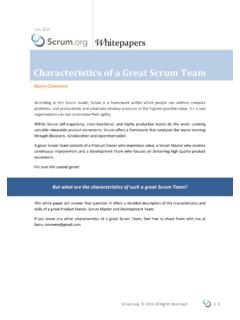Transcription of Trauma-Informed Systems (TIS)
1 Trauma-Informed Systems (TIS). Healing Ourselves, Our Communities and Our City PROGRAM OVERVIEW. Introduction trauma is a pervasive, long-lasting public health issue that affects our workforce and Systems . Like people, organizations are susceptible to trauma in ways that contribute to fragmentation, numbing, reactivity and depersonalization. trauma informed Systems work is based on the understanding that our service delivery Systems can inadvertently reinforce oppression and create harm. When our Systems are traumatized, it prevents us from responding effectively to each other and the people we serve. The trauma informed system Initiative (TIS) at the San Francisco Department of Public Health (DPH) is an organizational change model to support organizations in nurturing and sustaining Trauma-Informed practices.
2 Through TIS, we cultivate healing environments by increasing organizational resilience, improving workforce experience, and ultimately supporting organizations in responding to and reducing the impact of trauma . We believe that this transformation from Systems that induce trauma to Systems that can sustain healing practices and wellness occurs along a continuum from trauma Organized to Healing Organizations. Rev. 11-15-17 2|P a g e Implementation Science TIS utilizes the principles of implementation science to ensure that knowledge acquisition actually leads to change in organizational practices and policy. The conceptual framework for the TIS model includes the six components in the below diagram, which are described in more detail in the pages that follow.
3 When organizations commit to TIS. and becoming a Healing Organization, they commit to: Adopting the six principles of Trauma-Informed Systems and being willing to have vulnerable conversations about how these principles exist in the work place (see page 4). Leading from a Trauma-Informed lens Embedding TIS trainers within their organizations as content experts Supporting an internal team of TIS catalysts and champions who plan, implement and support activities that promote organizational healing Enhancing organizational programs, practices and policies to reflect the six principles of Trauma-Informed Systems Collaborating and aligning efforts within and across Systems and sectors Evaluating efforts continuously Leadership Engagement Training: Evaluation TIS 101.
4 Policy & Embedded Practice Change Trainers Champions &. Catalysts Rev. 11-15-17 3|P a g e trauma informed principles The following six principles guide our organizational healing work. These principles provide the framework for the foundational training curriculum as well as the starting place for considering staff relationships, programs and policy. Understanding Stress & trauma Without understanding trauma , we are more likely to adopt behaviors and beliefs that are negative and unhealthy. However, when we understand trauma and stress we can act compassionately and take well- informed steps toward wellness. Compassion & Dependability trauma is overwhelming and can leave us feeling isolated or betrayed, which may make it difficult to trust others and receive support.
5 However, when we experience compassionate and dependable relationships, we reestablish trusting connections with others that foster mutual wellness. Safety & Stability trauma unpredictably violates our physical, social, and emotional safety resulting in a sense of threat and need to manage risks. Increasing stability in our daily lives and having these core safety needs met can minimize our stress reactions and allow us to focus our resources on wellness. Collaboration & Empowerment trauma involves a loss of power and control that makes us feel helpless. However, when we are prepared for and given real opportunities to make choices for ourselves and our care, we feel empowered and can promote our own wellness.
6 trauma informed Systems Cultural Humility & Responsiveness We come from principles and practices support diverse social and cultural groups that may experience reflection in place of reaction, and react to trauma differently. When we are open to understanding these differences and respond to them curiosity in lieu of numbing, self- sensitively we make each other feel understood and care instead of self-sacrifice and wellness is enhanced. collective impact rather than siloed structures.. -Ken Epstein, Speziale, K, Gerber, E &. Resilience & Recovery trauma can have a long-lasting Loomis, B (2014): SF DPH. and broad impact on our lives that may create a feeling Trauma-Informed Systems Initiative of hopelessness.
7 Yet, when we focus on our strengths and clear steps we can take toward wellness we are more likely to be resilient and recover. Rev. 11-15-17 4|P a g e Program Components KNOWLEDGE CHANGE. trauma 101. trauma informed Systems 101 Transforming Stress and trauma : Fostering Wellness and Resilience is our foundational hour training for all staff members. The content explores the application of our six principles of Trauma-Informed Systems . The work of system change begins with sharing foundational knowledge of the impact of trauma on the people we serve, ourselves, our colleagues, our system and our community. Creating a shared language within our system is critical to responding to this impact.
8 The training's Learning Objectives are: Understand effects of chronic stress and trauma on our lives, our brains and our bodies Learn how race and culture intersect with trauma to impact individual, organizational and community health Understand and apply principles of Trauma-Informed Systems Learn strategies to develop individual & organizational resilience in order to create and maintain more healthy, Trauma-Informed responses in workplace relationships Train the Trainer (TTT). This twenty hour training program, combined with coaching and support from Lead Trainers, leads towards certification for participants to deliver TIS 101 trainings. Trainees also participate in a Learning Community to hone their presentation skills and receive curriculum updates.
9 The objectives of the Train the Trainer program include: Build capacity of agencies to sustain and expand upon TIS 101. Support the development of trauma informed experts who can lead the transfer of knowledge within organizations and enhance organizational healing Ultimately, by building a community of trauma experts within our organizations we are embedding knowledge within the workforce. This approach is not dependent on resources to fund outside consultants; it creates a flexible, efficient and more effective model for training and sustaining trauma informed principles . Rev. 11-15-17 5|P a g e Program Components POLICY & PRACTICE CHANGE. TIS/Healing Organization Committee Organizational change requires involvement from all levels of an agency.
10 We recommend that organizations establish a TIS/Healing Organization committee or work group that includes a vertical slice of staff from line staff to leadership that meets regularly to plan, guide and evaluate the implementation of TIS. Through the work group, the organization dedicates time for discussion of TIS efforts and continuous quality improvement by: Identifying areas of strength and growth related to TIS principles Brainstorming strategies to foster healing workplaces Evaluating implementation efforts Discussing communication strategies to ensure aligned and consistent messaging to the broader organization The workgroup should include the following roles: Trainers who serve as a resource to enhance the committee's trauma understanding Leadership who hold the healing vision for their organization, ensure alignment and integration of TIS principles into policy and practices, and dedicate resources to TIS.






